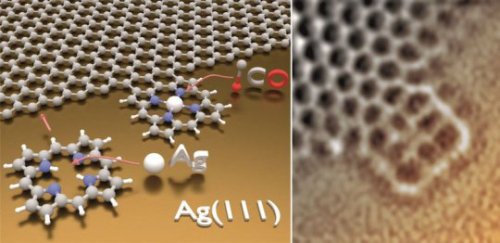#technical university of munich
Closing the gap: On the road to terahertz electronics
Asymmetric plasmonic antennas deliver femtosecond pulses for fast optoelectronics
A team headed by the TUM physicists Alexander Holleitner and Reinhard Kienberger has succeeded for the first time in generating ultrashort electric pulses on a chip using metal antennas only a few nanometers in size, then running the signals a few millimeters above the surface and reading them in again a controlled manner.
Classical electronics allows frequencies up to around 100 gigahertz. Optoelectronics uses electromagnetic phenomena starting at 10 terahertz. This range in between is referred to as the terahertz gap, since components for signal generation, conversion and detection have been extremely difficult to implement.
The TUM physicists Alexander Holleitner and Reinhard Kienberger succeeded in generating electric pulses in the frequency range up to 10 terahertz using tiny, so-called plasmonic antennas and run them over a chip. Researchers call antennas plasmonic if, because of their shape, they amplify the light intensity at the metal surfaces.
Post link
How porphyrin may enhance graphene
Porphyrins, the same molecules that convey oxygen in hemoglobin and absorb light during photosynthesis, can be joined to the material of the future, graphene, to give it new properties. This was recently shown by a team of scientists at the Technical University of Munich, in which a Spanish researcher also participated. The resulting hybrid structures could be used in the field of molecular electronics and in developing new sensors.
At the moment, it is difficult to find a material that attracts as much attention from scientists and engineers as graphene, which is made up of a layer of carbon atoms arrange in a hexagonal structure. It is flexible, extremely thin and clear, while being highly resistant and a conductor of electricity – ideal requirements for a number of uses, especially in the field of electronics.
However, using graphene to capture solar energy or as a gas sensor requires specific properties which it lacks, although it can acquire them by addition or functionalisation with certain molecules.
A team of researchers from the Technical University of Munich (TUM), led by Professor Wilhelm Auwärter, has succeeded in bonding an important biochemical group to the graphene sheet: porphyrins, protein rings which are part of chlorophyll, essential for photosynthesis in plants, and hemoglobin, which is responsible for conveying oxygen in animals’ blood.
Post link


